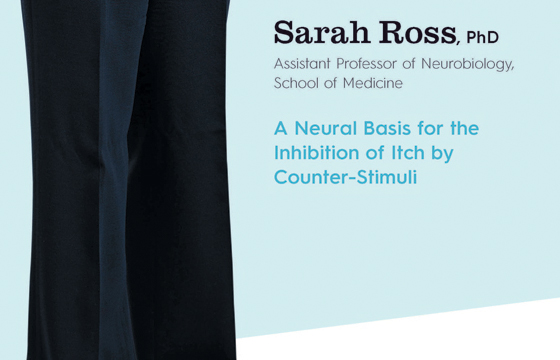Topic Overview:
Ross and colleagues study the functional organization of spinal somatosensory circuits, such as pain and itch. Understanding these neural circuits is important because chronic pain and itch are among not only the leading health problems in the United States but also the most costly. To understand the spinal microcircuits that integrate and gate noxious sensory input, the Ross lab has developed a semi-intact somatosensory preparation that allows spinal circuits to be studied at a new level of detail. This approach involves recording from the spinal output neurons while controlling somatosensory input and simultaneously manipulating activity of specific populations of spinal interneurons via optogenetics.
Most aversive chemicals are not particularly specific: They can either cause pain or itch, depending on how they are applied. And yet pain and itch are experienced as distinct sensations. How does this work? Ross will describe how kappa and mu opioids are involved in sharpening sensory input to help distinguish pain and itch.
One of the most effective short-term strategies to relieve itch is to scratch. However, the neural basis of this phenomenon is not clear. Ross will describe experiments that uncover a particular spinal microcircuit that mediates the inhibition of itch by counter-stimuli.
Harnessing these endogenous spinal microcircuits could pave the way for the development of better treatments for pain and itch.



































